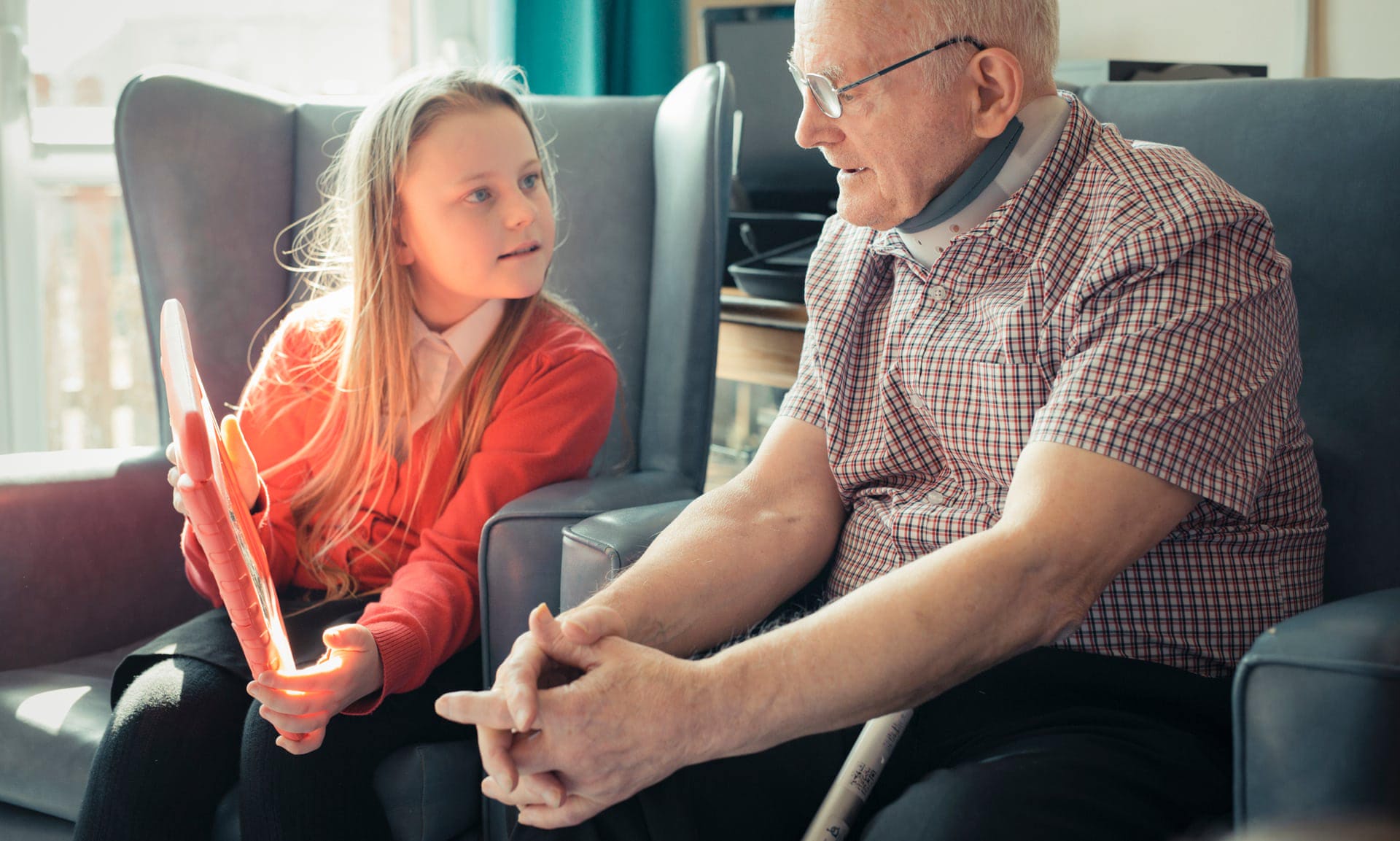Emoji, Skype, Selfies - can these communication technologies close the generation gap? In part, yes! Young people are teaching senior citizens how to use technology, and it’s benefiting both groups. Here’s how.
Sharing knowledge about technology can form both a means and an end for more meaningful connections between the elderly and the young. A growing number of initiatives are recognizing the huge potential of bringing different generations together - from reducing feelings of isolation and boredom amongst the elderly, to positively imparting children with wisdom that only comes from life experience.
Indeed, existing intergenerational care homes - where care for both the old and young takes place on the same site - celebrate how interactions between different age groups improves the mobility, lifespan and overall happiness amongst older people, while providing strong, caring relationships for the young.
Fostering connections between young and old
So, what about those who do not experience the benefits of daily interaction with young people? Signing up for Ipad lessons may be the answer - and the assigned teacher could be a pleasant surprise! At a regular care home in the UK, school children visit on a weekly basis to teach older people how to use technology.
This simple idea surpassed all expectations - the collaborative venture into technology resulted in mutually beneficial experience for both groups. As the children shared their technological skills, the elderly passed on their life experiences.
Between sessions, fascinated pupils were able to email residents questions about their life histories, and learn more about events such as the Second World War. In California, a mentoring scheme, ‘Teach Seniors Technology’, is showing the elderly how to swipe.
One participant, who at first struggled to even open her ipad, went on to print her own calendar of ipad paintings which she then sent to friends and family. In other cases, simple game consoles such as Wii bring generations together in healthy competition through a mixture of virtual and physical gaming. These examples demonstrate how technology can succeed in fostering meaningful connections both on and offline.
What happens when old and young connect
Indeed, while the basics of email and Skype can help less mobile members of society keep in contact with friends and family, the real-life interactions that surround the development of such skills are equally as beneficial.
One young person, a volunteer for the US-based ‘Mentor Up’ scheme for senior citizens, stated, ‘I can honestly say I feel like i’ve learned more during these sessions than I’ve taught...for me, just talking with them and learning their stories is what draws me back every time.’
Apps, videos, games and the wealth of information accessible online can form a diverse library that both generations can draw on to share their life experiences, aspirations and spark joy. For example, one young mentor put his mentee back in contact with a childhood friend after finding his email address online.
Bridging the generational gap
Collaborations of this kind are groundbreaking, and crucially highlight how different generations have a lot to offer each other. Often elderly people seek social connections and a sense of purpose, while in many cases young people are less judgemental and open to new experiences. As explained above, it seems technology can act as a middle ground for realizing these needs, and can form a bridge for generational gaps.
The everyday impact of collaborative online explorations is promising: since residents of the UK care home were introduced to ipads and virtual headsets ‘the need for antipsychotic drugs has all but disappeared, and emergency ambulance calls have fallen 29%.’ It seems that these initiatives form just the start of a different approach to caring for the elderly, essential at a time when Europe’s population is getting older.
These benefits do not exclude the young - a 2016 Stanford report concluded that ‘aging adults play critical roles in the lives of young people, especially the most vulnerable in society.’ Certainly, seeing children as our future should not involve consigning older generations to the past - the elderly play a crucial role in shaping what our society will become.
It seems, when thinking about the possibilities of technology, we should not forget the meaningful connections between people that surround it. In this case, technology is a site at which sections of society can form bonds and enrich each other's lives.
In both virtual and physical worlds, interactions of this kind to improve wellbeing in powerful and mutually beneficial ways. Afterall, every generation has grown up with technology. This leads us to wonder, whether we can imagine a future in which we can grow along with our technology and find joy in its ability to bring people together, both on and offline.

Share your thoughts and join the technology debate!
Be the first to comment